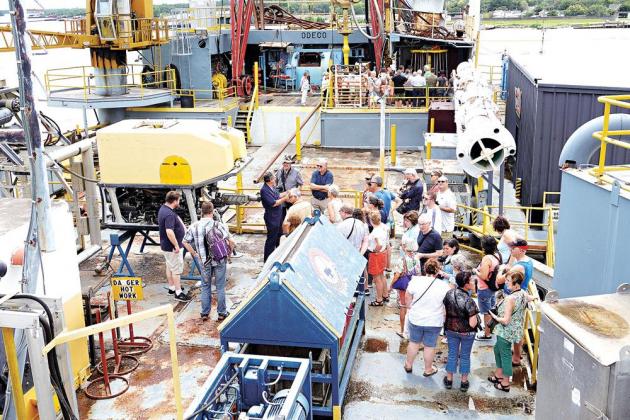
Bill Decker
What’s up with offshore?
The oil and gas industry employs nearly 1,800 people directly in the St. Mary region, according to the U.S. Bureau of Labor Statistics. And that doesn’t count the shipbuilders and other businesses whose well-being relies on work in the Gulf of Mexico.
Just as important for Morgan City, a city with an oil rig in the middle of the main drag, offshore is about history, Mr. Charlie, and working seven-and-seven. Offshore work is in the heart of the people.
And offshore was once the be-all-and-end-all of energy growth.
As recently as a decade ago, thinking about the future of oil and gas was dominated by the idea of “peak oil.” The theory was that oil discoveries or oil production, depending on how pessimistic you wanted to be, would hit a maximum sometime in the first part of this century.
That peak would be followed by a decline in production, steadily rising energy prices and all kinds of disruptions in transportation, manufacturing, agriculture and life itself. Any new oil production, the U.S. Energy Information Administration once predicted, was likely to come from offshore.
Places with economies tied to offshore energy — places like St. Mary — would be swimming in cash.
But peak oil is yesterday’s news.
A confluence of events that happened about 2010 changed the thinking. One was the BP oil spill, which threatened environmental catastrophe linked to deepwater drilling. Another was the application of directional drilling and hydraulic fracturing, which had already produced enough natural gas to cut prices by 80 percent, to inland shale oil deposits on a big scale.
The third occurred at almost the instant former U.S. Rep. Jeff Landry, R-New Iberia, was holding up his famous “Drillling = Jobs” sign at a 2010 presidential speech. Goldman Sachs issued a report predicting that the new inland production would make North America the world’s leading oil producer by 2017.
Maybe so, but … Wait. What?
If anything, Goldman was low-balling the forecast. What followed was the greatest increase in U.S. oil production on a percentage basis since the first wildcatter produced his third barrel.
In 2010, the nation was producing 5 million barrels of oil a day. Late in 2017, daily production broke the previous record of 10 million barrels set in 1970. In 2018, that figure was 11.5 million barrels, according to the energy agency.
Last year, inland production in Texas and New Mexico by themselves hit 5.4 million barrels. That’s where the oil-soaked Permian Basin is. Some say the Permian alone will soon produce enough oil to be No. 2 among oil-producing nations.
As Goldman predicted, America is at the top of the world, oil-wise.
The Gulf’s share of production fell from 25 percent to 17 percent as inland fracking developed momentum. Production is up, but in 2018, according to the energy agency, offshore contributed only 1.74 million barrels per day to the nation’s oil output.
Yet there are some signs that smart money, private and public, is still looking offshore.
BP announced earlier this year that it had discovered a 1 billion-barrel deposit in the Gulf and that it was sinking millions into exploiting existing reserves.
The Greater Lafourche Port Commission recently completed a $12 million slip expansion project at Port Fourchon, which serves 90 percent of deepwater Gulf oil and gas operations, The Associated Press reported this week.
And it’s hard to believe Swiss company Kopter’s decision, announced Mardi Gras day, to put some of its assembly operations at Lafayette Regional Airport didn’t have something to do with offshore work in the Gulf, one of the world’s busiest general aviation zones.
Without being Goldman Sachs, it’s tough to see what the future holds. The recent St. Mary Excel-Urban Land Institute study of development opportunities in Berwick and Morgan City represents a nudge toward economic diversification here as a hedge.
What comes next isn’t clear.
If Democrats are successful in 2020’s elections, climate change will become a larger part of the national conversation. Natural gas could get a boost from the conversion of coal-fired generating plants, but overall, greater environmental awareness isn’t going to be a boon for fossil fuels.
Yet a part of the offshore history that includes Mr. Charlie also includes the invention of jack-up rigs, deepwater techniques and seismic exploration. That innovative spirit that created fracking might find a way to make offshore oil production attractive again.
Bill Decker is managing editor of The Daily Review.
